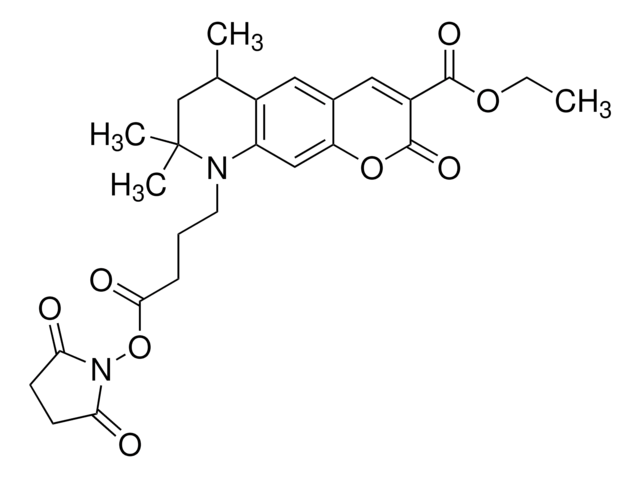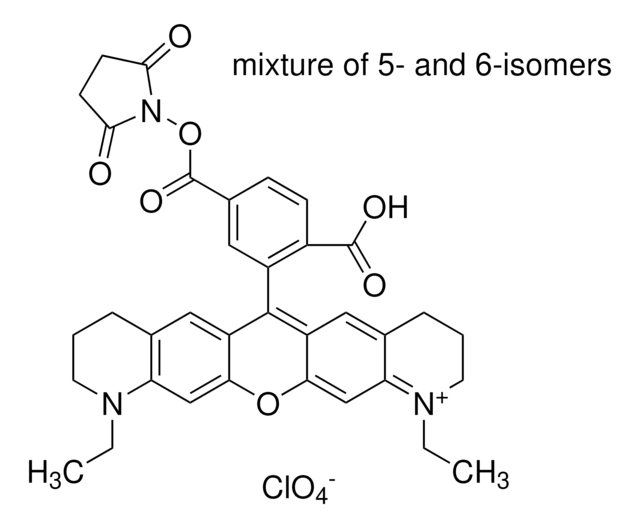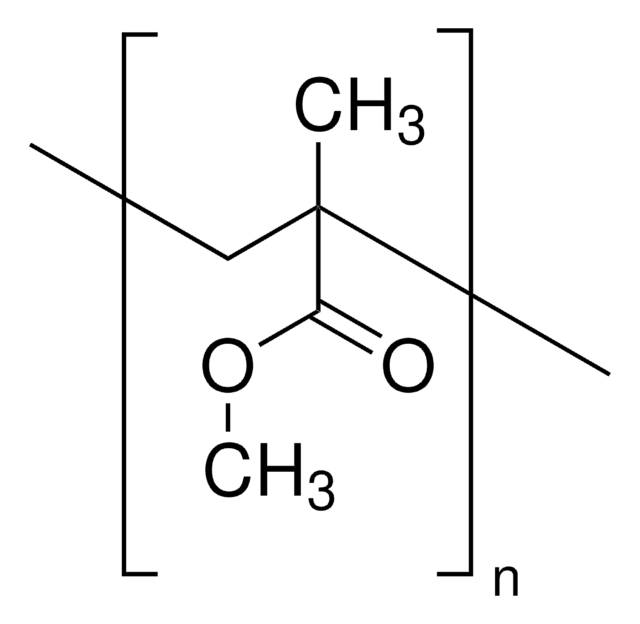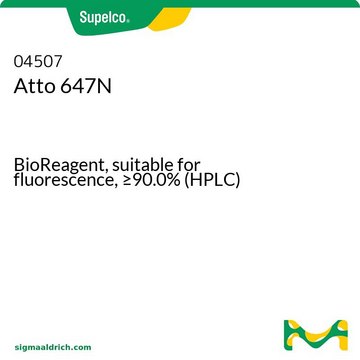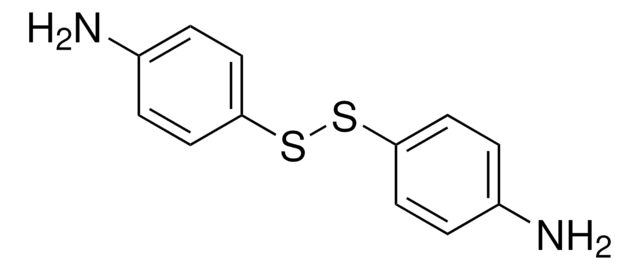92835
Atto 550 NHS ester
BioReagent, suitable for fluorescence
Sign Into View Organizational & Contract Pricing
Select a Size
All Photos(1)
Select a Size
Change View
About This Item
Recommended Products
product line
BioReagent
Assay
≥90.0% (HPLC)
≥90.0% (degree of coupling)
form
powder
manufacturer/tradename
ATTO-TEC GmbH
λ
in ethanol (with 0.1% trifluoroacetic acid)
UV absorption
λ: 553.0-559.0 nm Amax
suitability
suitable for fluorescence
storage temp.
−20°C
Application
Atto fluorescent labels are designed for high sensitivity applications, including single molecule detection. Atto labels have rigid structures that do not show any cis-trans-isomerization. Thus these labels display exceptional intensity with minimal spectral shift on conjugation. Atto 550 NHS ester is a reagent used to label molecules such as proteins with the Atto 550 fluorescence probe. This probe may be used in the design of fluoresence resonance transfer (FRET) detection systems.
related product
Product No.
Description
Pricing
Storage Class Code
11 - Combustible Solids
WGK
WGK 3
Personal Protective Equipment
dust mask type N95 (US), Eyeshields, Gloves
Choose from one of the most recent versions:
Already Own This Product?
Find documentation for the products that you have recently purchased in the Document Library.
Andriy Mokhir et al.
Inorganic chemistry, 44(16), 5661-5666 (2005-08-03)
A concept of fluorescent metal ion sensing with an easily tunable emission wavelength is presented and its principle demonstrated by detection of Cu(2+). A fluorescein dye was chemically modified with a metal chelating group and then attached to the terminus
Smart-aggregation imaging for single molecule localization with SPAD cameras.
Gyongy, I.; et al.
arXiv (2016)
Modeling colitis-associated cancer with azoxymethane (AOM) and dextran sulfate sodium (DSS).
Thaker AI, Shaker A, Rao MS, Ciorba MA.
Journal of Visualized Experiments (2012)
Eric J White et al.
Clinical chemistry, 55(12), 2121-2129 (2009-10-10)
Epidemiologic studies require identification or typing of microbial strains. Macrorestriction DNA mapping analyzed by pulsed-field gel electrophoresis (PFGE) is considered the current gold standard of genomic typing. This technique, however, is difficult to implement because it is labor-intensive and difficult
Sebastian Braun et al.
PloS one, 6(5), e19125-e19125 (2011-06-01)
Nucleic acids promote amyloid formation in diseases including Alzheimer's and Creutzfeldt-Jakob disease. However, it remains unclear whether the close interactions between amyloid and nucleic acid allow nucleic acid secondary structure to play a role in modulating amyloid structure and function.
Our team of scientists has experience in all areas of research including Life Science, Material Science, Chemical Synthesis, Chromatography, Analytical and many others.
Contact Technical Service
